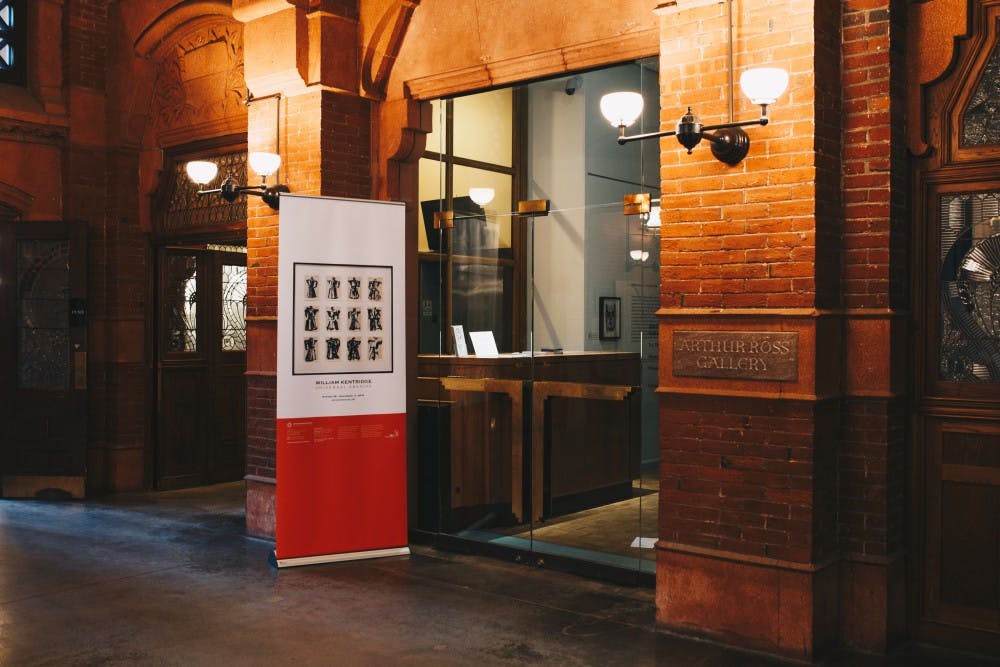In a world oriented around order and established roles, William Kentridge captures human experiences of uncertainty and spontaneity, namely, in his words, “an art of ambiguity, contradiction, uncomplicated gestures, and uncertain endings.” His touring exhibit, William Kentridge: Universal Archive, is displayed in the Arthur Ross Gallery from now until November 11.
The exhibit is a series of 79 linocut images printed onto dictionary and encyclopedia pages, each carved into linoleum blocks, which are then inked and run through a press. Because of the nature of the medium, the images of trees, coffee pots, cats, typewriters, birds, horses, nudes, and self–portraits resemble calligraphic drawings and strokes more so than the typical relief printings. In black ink, the strokes begin with precision, progressing into more and more undefined shapes.
The defining factor of the paintbrush is then further reflected in the entire exhibit, with the images presented in a series. Over a number of images is a gradual transformation of a singular object from a distinguishable and concrete form to one of a different degree of abstraction. It’s once again a show of uncertainty and spontaneity as it is a show of the genuine and unrehearsed creative process.
There’s no exact form Kentridge aims for: his pictorial manner is rough and expressive. And though the images are mechanically produced through a rigorous carving process, the process is still inexact. Even prints from the same block differ slightly, some in the most minuscule of ways. There’s no full control over the final outcome, further adding to the theme of uncertainty in the context of a society that holds reason and rationality above all.
This motif of uncertainty in a rational world is most likely derived from Kentridge’s own life before becoming one of the most internationally renowned artists. Born in 1955, the native South African witnessed life both pre– and post–apartheid. Life then was uncertain, even in a system so largely dominated by the structured rules of discrimination.
One could say that the coincidental differences in the prints run contrary to the idea of rationality. After all, the images are printed on the text of the dictionary and encyclopedia pages, which are often symbolic of carefully crafted and defined meanings of rationality. But then again, the relationship between text and images, if such a relationship even exists in the first place, is subjective and open to interpretation, accentuating the lack of structure and the unknown.
The uncertainties, the spontaneities, and the doubts—these are what make the exhibit all the more powerful even without reaching calculated answers. Through his creative process, Kentridge has expanded on the work of art by opening up its meanings and inviting in new possibilities and multiple, often personal, interpretations. At least, from the first look, that’s what it is: the seemingly digressive, the meandering, and the uncertain. From another perspective, it’s something altogether different.

